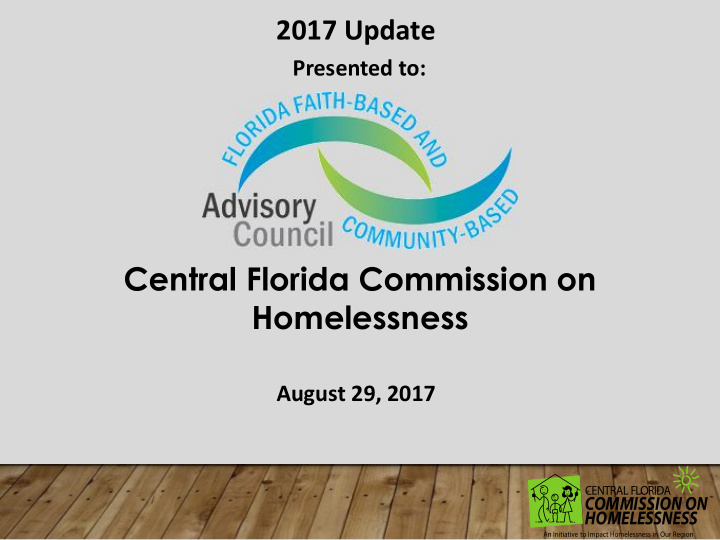



2017 Update Presented to: Central Florida Commission on Homelessness August 29, 2017
Community Impact Model
The Partners Continuum Develop regional of Care policies and advocacy plan (CoC) Identifies regional best Seeks and manages practices and long-term investments proposes system pilots in system Provides oversight for a improvements comprehensive and Identifies and seek integrated regional investments Develops system pilots response to and manages homelessness COC’s Lead Agency Community Resource investment Network Contracts with the lead Manages HUD/other agency (HSN) govt funding for facilitating a system of Identify and catalogue care focused on HUD existing resources within requirements 150+ the Faith Community Service “Magnet” for Provides the faith additional funding and community with training investments Providers to better serve those experiencing homelessness
Veteran’s Homelessness Reduced Veteran’s chronic homelessness to functional 0 in 2016 We did this through housing and housing stabilization, simplified access to Permanent Supportive Housing, and linking housing to services Working toward ending ALL Veteran’s homelessness
Chronic Homelessness 20% of the homeless population, 80% of cost H.O.P.E. Volunteer Program Housing the First 100 pilot: Over 700 housed 100% remained housed 57% reduction in ER visits 94% maintained or increased income Community costs reduced to $20,000 from $31,000
Chronic Homelessness and Criminal Justice: Why Study This?
Report Recommendations • Focus Area 1: CIT • Focus Area 2: Navigation Center • Focus Area 3: Problem Solving Court • Focus Area 4: Data
Family Homelessness In 2014, Florida ranked worst nationwide for unsheltered family homelessness In 2017, 10,000 students are homeless Support the Impact Families Pilot Engage the Faith Community: Community Resource Network (CRN) He Got Up! Open Table COPE
Community Resource Network Mobilize congregations and link them to resource and volunteer needs Potential to engage 1,400 regional places of worship Morgan and Morgan, P.A. provided infrastructure investment “People don’t become homeless because they run out of money, at least not at first. They become homeless because they run out of relationships.”
Youth Homelessness Voices of Youth Count survey with researchers from Chapin Hall at the University of Chicago Study will help us understand regional youth homelessness, identify subgroups, and target needs specific to this population
System-Wide Enhancements Community 5-Year Strategic Plan Regional Data Integration Pilot Long-Term Investment Strategy Housing Access Regional Policy Plan
Questions?
Recommend
More recommend